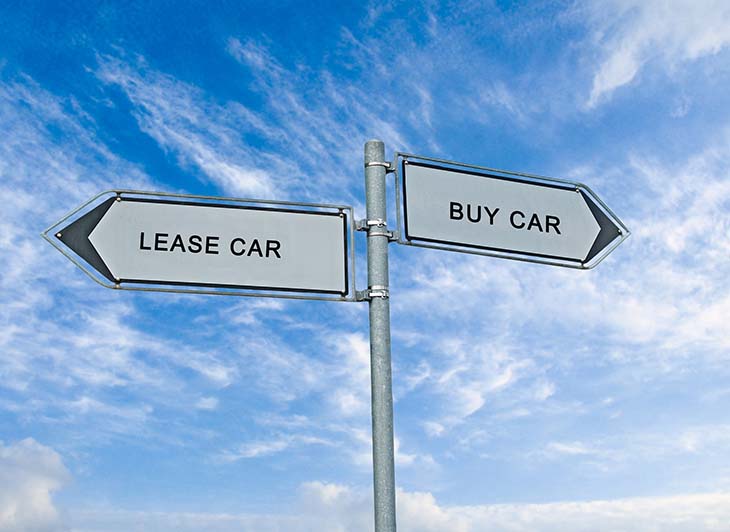When it comes to buying a car, it’s not always easy to save up enough money to get the car you really want. And when you do, there’s always that nagging feeling that in a few years time, it could be out of date. So is there a solution?
The answer is Car Leasing. By taking advantage of a car leasing agreement, you have all the benefits of owning a car, without having to save up a small fortune to pay for it.
So, what is car leasing?

In a nutshell, car leasing is a type of finance agreement but instead of paying to own the car, you’re effectively paying to rent it from the leasing company.
Conditional sale agreements such as Hire Purchase, work by spreading the cost of the vehicle over the length of the agreement. So your Monthly Payments cover the total cost of the car and any interest charged on the amount you’ve borrowed to buy the vehicle.
But in a car leasing agreement, you don’t own the car at the end of the term length. Instead you return the car to the finance provider. This means that, in general, the amount you end up paying is lower.
How car leasing works
With a leasing agreement, instead of spreading the cost of the car across monthly payments, your simply renting the vehicle and covering the cost of Depreciation for the length of the contact.
Let’s look at an example to make things clearer.
Say you’ve had a look around for that perfect vehicle and you decide a second-hand Nissan Juke is the perfect choice for you. Your Juke is valued at £17,395 and the length of your contract is 48 months.
At the start of your car leasing agreement, the finance provider will calculate your monthly cost, based on the cost of depreciation and interest over the Term Length.
Most leasing agreements require an initial upfront payment (usually equal to 3-6 monthly payments).
Based on an annual mileage limit of 10,000 miles, you will pay 48 monthly instalments of £207. With a 3-month initial payment, your total amount payable is £10,557.
So, let’s see how the cost compares with a hire purchase agreement.
With hire purchase, you evenly divide the amount borrowed (£17,395) across 48 equal monthly payments. With a representative APR of 18.9%, your monthly payments are calculated at £863.70 and your total amount repayable will be £20,729.
As you can see, car leasing offers significantly lower monthly payments compared to hire purchase. The main reason being, you’re not paying to own the vehicle.
Of course, these are not real figures and your monthly payments are calculated based on your individual circumstances. You will also need to factor in any potential fees included in your agreement, but hopefully this example offers a better insight into how car leasing works.
What are the benefits of a car leasing agreement?

The primary advantage of a car leasing agreement is the lower monthly payments. Because the amount you borrow is lower, you don’t have to pay as much each month. This can give you more flexibility on the car you want. Because by lowering your monthly, you can get a better car for your budget.
A good deposit can also make a car leasing agreement very attractive, as it will lower the amount of money you pay each month even further. Combine that with an excellent or good credit rating, and you can end up with a very affordable package.
The other benefit of car leasing is that you can change your car at the end of your agreement for a new one and start the leasing process again. That way, you can take advantage of newer cars with the better, Safety Technology and fuel efficiency. If you have a family, you can choose a bigger car. Or if you need something for long commutes, again you can change. The flexibility is key.
And the disadvantages?
As you don’t own the car, you normally have to follow some restrictions when it comes to a car leasing package. These will be set by the leasing company at the start of the agreement and normally cover three areas.
The first is an annual mileage limit. Depreciation is partly calculated by the amount of wear and tear on a vehicle, and one of the biggest indicators of this is mileage. So to ensure that the amount of money they’ve set for the car to depreciate at the start of the package, they will add an Annual Mileage Limit. If you go over this, you can often find yourself charged a few pence for every mile over the limit.
The second factor is condition. It’s important you return the vehicle in an acceptable condition. If the car is returned with scratches or dents that impact the resale value of the car, you will likely face a charge.
Most leasing companies have fair wear and tear guide that outlines what damage is acceptable, and what is not. For example, one small dent that is less than 13mm (½") in diameter is usually acceptable, but if you have several dents - or a dent larger that falls outside the accepted criteria, you’ll likely be charged.
The finance provider may also stipulate where and when you should get the car serviced. They may have a list of approved mechanics or garages where you must take the car. This gives you less flexibility, and you may not be able to choose your trusted local mechanic.
Apply today
If you’ve been thinking about making a change and want to get that new car you’ve been dreaming of, why not give car leasing a go?
Apply online with Creditplus, and your dedicated customer advisor will soon be giving you all the information and advice you need to get a fantastic car leasing deal. Just complete your simple online application form and you’ll soon be on the road to your fantastic new car.





 Facebook
Facebook Twitter
Twitter Instagram
Instagram LinkedIn
LinkedIn Youtube
Youtube